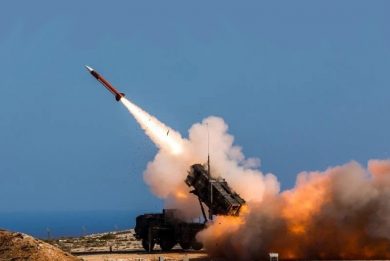
US Army IBCS Flight Test Demonstrates Joint Engagement in Electronic Attack Environment
Huntsville, Ala. – July 15, 2021 – The U.S. Army successfully engaged a cruise missile target in an highly contested electronic attack environment during a developmental flight test using the Northrop Grumman Corporation (NYSE: NOC) Integrated Air and Missile Defense Battle Command System (IBCS).
The test at White Sands Missile Range in New Mexico demonstrated the integration of IBCS and the U.S. Marine Corps AN/TPS-80 Ground/Air Task-Oriented Radar (G/ATOR) system, also manufactured by Northrop Grumman. The flight test incorporated first-time live testing and demonstration of a Joint Track Manager Capability (JTMC) which provided a bridge between IBCS and the Navy’s Cooperative Engagement Capability (CEC), enabling the sharing of G/ATOR track data on the IBCS Integrated Fire Control Network (IFCN). With support from Lockheed Martin, the flight test architecture also incorporated two F-35 combat aircraft integrated on the IFCN with on board sensors contributing to the IBCS developed joint composite track used to perform the engagement.
The integration of additional sensors from multiple services continues to show the power inherent in the IBCS architecture and design to incorporate and integrate joint sensors across multiple domains,” said Christine Harbison, vice president and general manager, combat systems and mission readiness, Northrop Grumman. “By enabling joint operation and utilizing multiple sensors operating in various bands, IBCS was able to operate through the electronic attack environment so soldiers can identify, track and ultimately intercept the threat.”
Two surrogate cruise missiles were launched in the test, one performing the electronic attack mission to disrupt radar performance, and the other flying a threat profile targeting friendly assets. Soldiers of the 3-6 Air and Missile Defense Test Detachment used IBCS to track the surrogate cruise missile targets, identify the threatening missile, and launch a Patriot Advanced Capability Three (PAC-3) interceptor.
The latest flight test success integrated the widest variety of sensors to date on the IFCN for an IBCS test, including one Marine Corps G/ATOR, two Army Sentinel radars, one Army Patriot radar and two U.S. Air Force F-35 fighter aircraft.
The Gallium Nitride-based AN/TPS-80 G/ATOR is a digital, software-defined advanced Active Electronically Scanned Array (AESA) multi-mission radar that provides comprehensive real time, full-sector, 360-degree situational tracking against a broad array of threats.
This was the eighth of eight successful developmental or operational flight tests performed with the IBCS program. The test was conducted as risk reduction prior to beginning the Initial Operational Test & Evaluation (IOT&E) phase this fall. IOT&E is a comprehensive test of IBCS system performance which will be conducted under realistic operational conditions prior to system employment. The IOT&E informs a Department of Defense and U.S. Army initial operational capability decision.
Northrop Grumman is pioneering joint all-domain command and control with IBCS. The system’s resilient, open, modular, scalable architecture is foundational to deploying a truly integrated network of all available assets in the battlespace, regardless of source, service or domain. IBCS enables the efficient and affordable integration of current and future systems, including assets deployed over IP-enabled networks, counter-UAS systems, 4th- and 5th-generation aircraft, space-based sensors and more. It senses, identifies, tracks and defeats evolving air and missile threats, enabling revolutionary “all-domain, every sensor, best effector” operations.
Northrop Grumman solves the toughest problems in space, aeronautics, defense and cyberspace to meet the ever evolving needs of our customers worldwide. Our 90,000 employees define possible every day using science, technology and engineering to create and deliver advanced systems, products and services.
Image courtesy Northrop Grumman



